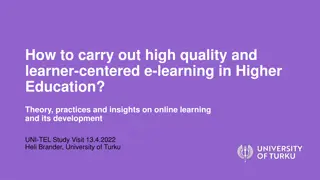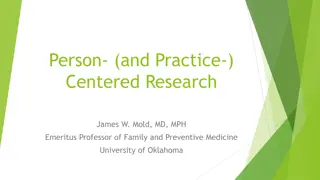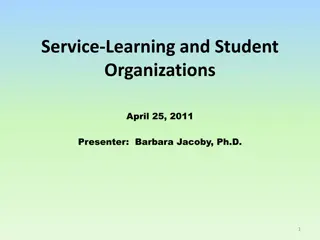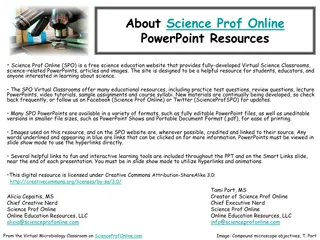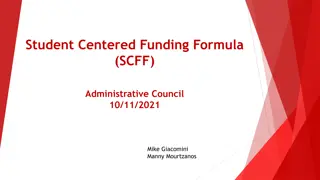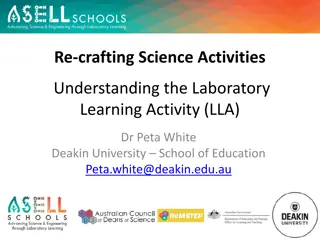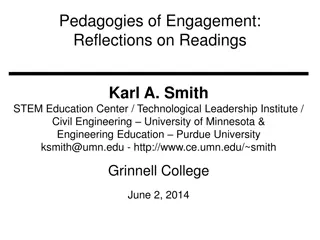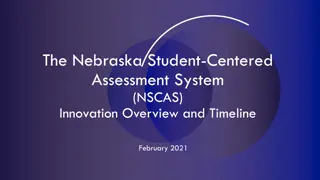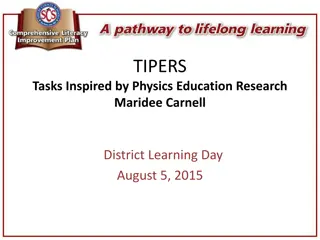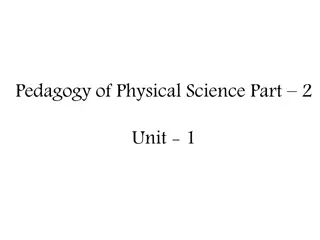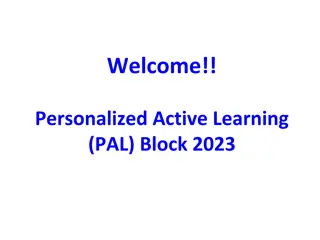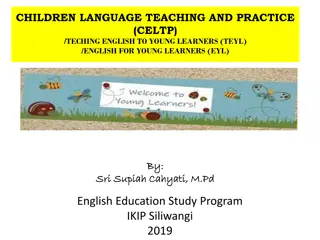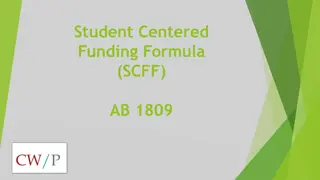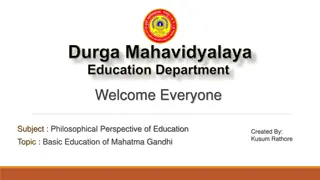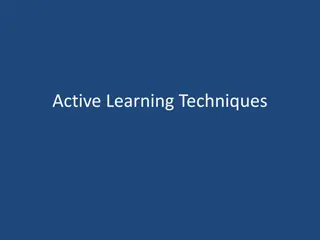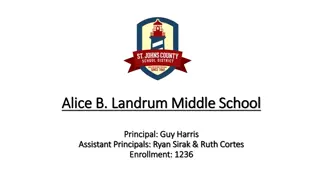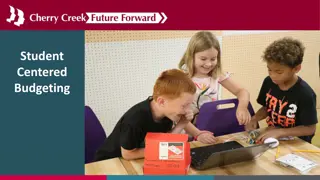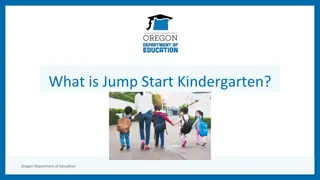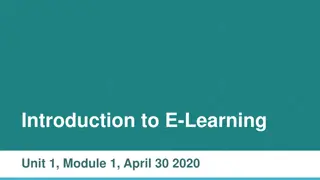Reflecting on Student-centered Learning Strategies in Science Education
Explore Day 3 of the RESPeCT Summer Institute focusing on STL strategies 4 and 5, deepening science content knowledge through weather analysis, and advancing student thinking using student-centered approaches. Discover the importance of student questions, data analysis, and constructing explanations in science learning.
Download Presentation

Please find below an Image/Link to download the presentation.
The content on the website is provided AS IS for your information and personal use only. It may not be sold, licensed, or shared on other websites without obtaining consent from the author. Download presentation by click this link. If you encounter any issues during the download, it is possible that the publisher has removed the file from their server.
E N D
Presentation Transcript
RESPeCTPD PROGRAM Day 3 RESPeCT Summer Institute
Agenda for Day 3 Day-2 reflections Focus questions Purposes and key features of STL strategies 4 and 5 Lesson analysis: STL strategies 4 and 5 Lunch Content deepening: weather and seasons Summary, homework, and reflections
Trends in Reflections Lesson Analysis Science Content Learning
Todays Focus Questions Lesson Analysis Content Deepening How can analyzing data and constructing explanations help students move forward toward deeper understandings of science ideas? How is weather the same or different in different places? How can we use what we know about weather patterns to decide whether a mystery city is Pomona?
The Student Thinking Lens: Moving Student Thinking Forward How can we advance students science learning without just telling them about science ideas and expecting them to memorize the concepts? By using STeLLA strategies 4 8 to engage students in making sense of the world around them.
The Student Thinking Lens: Moving Student Thinking Forward Strategies That Reveal Student Thinking Strategies That Move Student Thinking Forward 1. Elicit questions 2. Probe questions 3. Challenge questions 3. Challenge questions 4. Analysis and interpretation of data 4. Analysis and interpretation of data 5. Construction of explanations 5. Construction of explanations 6. Use and application of new ideas 6. Use and application of new ideas 7. Synthesis and summarizing 7. Synthesis and summarizing 8. Scientific communication 8. Scientific communication
The Student Thinking Lens: From Questions to Activities Look at the Summary of STeLLA Student Thinking Lens Strategies in the strategies booklet. What distinguishes strategies 1 3 from the rest of the Student Thinking Lens strategies?
STL Strategies 4 and 5: Purposes and Key Features Strategy 4 Strategy 5 What are the purpose and key features? What are the purpose and key features?
Relationships between Strategies 4 and 5 Discuss the question assigned to your group and be ready to share your ideas: Group 1: How is analyzing/interpreting different from describing observations? Group 2: How are strategy 4 and strategy 5 different? How are they related? Group 3: How are scientific explanation and scientific argumentation related? How are they different? How are arguments in science different from arguments in everyday situations? To support your responses, use the STeLLA strategies booklet and Quick Reference Tools for Strategies 4 and 5 (handout 3.1).
Practice Identifying Strategies 4 and 5 Examine student statements made during a science- class activity. Decide whether each statement represents the following: An observation An analysis or interpretation of the observations (e.g., describing a pattern) (strategy 4) An attempt to construct an explanation that has a claim, evidence, and/or reasoning that uses science ideas (strategy 5) An attempt to construct an argument (strategy 5) Refer to Practice Identifying Strategies 4 and 5 in Student Work (handout 3.2).
Lesson Analysis Focus Question How can analyzing data and constructing explanations help students move forward toward deeper understandings of science ideas?
Lesson Analysis: Review Lesson Context Video Clip 1 Review the lesson context at the top of the transcript for video clip 1 (handout 3.3 in your PD program binder).
Lesson Analysis: Identify Strategy 4 Video Clip 1 Identify instances where the teacher or the students are engaged in analyzing and interpreting data and observations by clarifying key observations, identifying a pattern in the observations, identifying what needs to be explained, organizing data/observations, and/or trying to make sense of the observations (analyzing, interpreting). Discuss: How are these actions implemented in the video? Link to video clip 1: 3.1_mspcp_kinder_weather_gaines_L2_c1 Link to video clip 1: 3.1_mspcp_kinder_weather_gaines_L2_c1
Lesson Analysis: Analyze Strategy 4 and Reflect Analyze What student thinking is revealed in the video clip by engaging students in analysis and interpretation? Were any opportunities missed for engaging students in analyzing and interpreting data and observations? Reflect What did you learn about strategy 4 from analyzing this video clip? Did the analysis process focus your attention on aspects you might not have noticed before? If yes, what is one example? Video Clip 1
Strategy 5 Practice: Explanation and Argumentation Analyze the weather sample transcript in the strategies booklet to find evidence of students engaged in constructing explanations and arguments by making a claim that answers the investigation question, making a claim and supporting it with evidence, making a claim and supporting it with science ideas, using logical reasoning to explain why the evidence supports a claim, and/or making an argument.
Lesson Analysis: Review Lesson Context Video Clip 1 Review the lesson context at the top of the transcript for the same video clip (handout 3.3 in PD program binder).
Lesson Analysis: Identify Strategy 5 Video Clip 1 Identify instances in the video clip where students are constructing explanations or arguments by stating an explanation or claim, using evidence from observations to support or develop the explanation/claim, using science ideas to support or develop the explanation/claim, using logical reasoning to develop the explanation/claim, and/or engaging in argumentation (agreeing, disagreeing). Discuss: How are these actions implemented in the video? Link to video clip 1: 3.1_mspcp_kinder_weather_gaines_L2_c1 Link to video clip 1: 3.1_mspcp_kinder_weather_gaines_L2_c1
Lesson Analysis: Analyze Strategy 5 and Reflect Video Clip 1 Analyze What student thinking is revealed by engaging students in constructing explanations of weather? Were there any missed opportunities to support students in constructing explanations and arguments? Reflect What did you learn about strategy 5 from analyzing this video clip? Did the analysis process focus your attention on aspects you might not have noticed before? If yes, what is one example?
Reflect: Key Ideas about Lesson Analysis Lesson analysis slows down classroom events so we can focus on specific student thinking. Making a claim based on evidence challenges us to listen carefully to what students are saying and understanding. When we make quick assessments, we might think they understand things they re actually still struggling with. Even though events happen fast in classroom teaching, we can get better at listening to students and making on-the-spot assessments of their understandings and confusion!
Summarizing Strategies 4 and 5 Create a word picture (a concept map, a thinking map, or other visual) to show how analysis and interpretation (strategy 4) are related to explanation and argumentation (strategy 5). Label any connecting arrows. Suggested words to use: Analyze and interpret Argument Data Evidence Explanation Logical thinking Organize Observe/observations Patterns Reasoning Science ideas
Reflect: Lesson Analysis Focus Question How can analyzing data and constructing explanations help students move forward toward deeper understandings of science ideas?
WEATHER AND SEASONS SCIENCE CONTENT DEEPENING Kindergarten
Weather and Seasons Content Deepening Day 3 Developed by Dr. Jeff Marshall Geological Sciences Cal Poly Pomona Used by permission Photo courtesy of Pixabay.com
Unit Central Questions Is weather the same everywhere all of the time? How do you know?
Weather and Seasons Lesson 4 Photo courtesy of Pixabay.com
Content Deepening: Focus Question 1 How is weather the same or different in different places?
Weather in Different Places Discuss these questions with an elbow partner: 1. How would you compare the weather in Pomona with the weather in San Francisco? 2. How would you compare the weather in San Francisco with the weather in Colorado Springs, or St. Louis? 3. What do you think causes any similarities or differences? Note:It s OK if you aren t familiar with the weather in these places. Just share your initial ideas.
Weather in Different Places Similarities and Differences Pomona San Francisco
Weather in Different Places Similarities and Differences San Francisco Colorado Springs St. Louis
Different weather Photograph by Audrey Mohan Photograph by Carey Woods in different places Photo courtesy of publicdomainpictures.net Photo courtesy of Publicdomainpictures.net
Different Weather in Different Places Do you think that Detroit and Pomona have the same or different weather in January? Photo used with permission from BSCS
Different Weather in Different Places January Temperatures for Detroit 20 19 18 January: Detroit Weather Calendar 17 16 15 14 13 12 11 10 9 8 7 6 5 4 3 2 1 Cool/Cold Hot/Warm
Different Weather in Different Places Students will also compare the number of snowy days on their January weather calendars for Detroit and Pomona.
Different Weather in Different Places The January weather pattern in Detroit is _____ and _____. Word Bank Picture Sunny Snowy The January weather pattern in Pomona is _____ and _____. Cool/Cold Warm
Different Weather in Different Places I think the weather patterns in Pomona and Detroit are [the same/different]. Photo used with permission from BSCS Photo used with permission from BSCS Pomona, CA Detroit, MI
Reflect: Content Deepening Focus Question 1 How is weather the same or different in different places?
Key Science Ideas Weather patterns are different in different places. Some places have sunny, warm weather with very little precipitation, while other places can be cool and cloudy with more precipitation.
Weather and Seasons Lesson 5 Photo courtesy of Pixabay.com
Content Deepening: Focus Question 2 How can we use what we know about weather patterns to decide whether a mystery city is Pomona?
Lesson 5: Review of Key Science Ideas Weather is what it looks like and feels like outside. Weather changes from month to month.
Lesson 5: Review of Key Science Ideas Weather changes during the day. Morning Afternoon Courtesy of BSCS Courtesy of BSCS
Lesson 5: Review of Key Science Ideas Weather patterns are different in different places at the same time of year. Courtesy of BSCS
Lesson 5: Review of Key Science Ideas We can tell what the weather is like outside by observing it, Courtesy of Clipartmag.com feeling it, and measuring it. Courtesy of Clipartmag.com Courtesy of Pixabay.com
Weather Detectives! We claim that the mystery city is Pomona. Our evidence is _______. OR We claim that the mystery city is NOT Pomona. Our evidence is _______.
Reflect: Content Deepening Focus Question 2 How can we use what we know about weather patterns to decide whether a mystery city is Pomona?
Investigating Temperature Differences Similarities and Differences San Francisco Colorado Springs St. Louis
Investigating Temperature Variations Photo courtesy of USGS
Investigating Temperature Variations DATA TABLE



